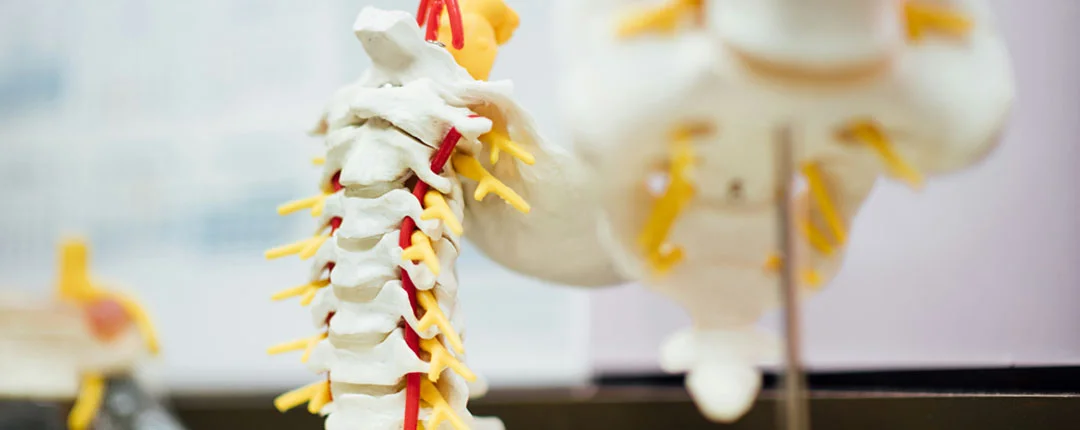A healthy spine is essential for an active and pain-free lifestyle. Preventing spine injuries is vital to sustaining your back’s well-being.
A resilient core can steady your spine to help keep your lower back painless and healthy. The muscles surrounding your spine can deteriorate from an injury or getting older, which can make actions like lifting, twisting, and stretching hard.
The Cause of Spine Pain
The human spine is an amazing, gracefully balanced system, the base support of the whole body. Curved in an S-shape, the spine maintains equilibrium between the chest, pelvis, neck, and lower back to keep the legs, head, and trunk in alignment.
The chief organ of the nervous system is a protective cover for some internal organs and the spinal cord. It gives us the support structure to have a straight posture. Moreover, the spine flexes to permit freedom of movement. In fact, each movement we make involves the spine. Over time, practically everyone will acquire a spinal problem.
This development is a usual side effect of gravity and aging over time. Although many adults are affected, not everyone displays symptoms of this degeneration. It typically only becomes an excruciating pain once it gets to an acute stage.
But if you’ve ever dealt with neck or back pain of any type, you know firsthand its possible effect on one’s quality of life. With just moderate or minor pain in the neck or back, a person may:
- Become increasingly sedentary
- Have hardship performing their job duties
- Need to decline certain activities
When it is severe, spinal pain might even require an emergency room visit. Long-term pain can also cause downheartedness, depression, and other types of psychological distress.
People with back pain typically are scared to move, which could stiffen their back and worsen their pain. Healthy movements, such as walking or stretching, lessen the chance of injury and pain by decreasing the pressure on the lower back.
It’s important to manage the health of your spine to enjoy lifelong mobility and strength. Your spine is the fundamental support structure of your body and taking care of it is critical for total health and well-being. Whether doing strenuous labor or sitting at a desk for long periods of time, here are ten tips for maintaining a healthy spine and adopting habits that promote good spinal health.
Maintain a Healthy Weight
Excessive weight could put unnecessary physical stress on the spine. Additionally, extra weight could typically result in added physical conditions or diseases that might further damage the spine or deepen current problems.
Being overweight has a very negative impact on the body such as putting more strain on the whole body including the spine and back muscles. Reduce or prevent back pain by:
- Eating a balanced meal
- Watching your calorie intake
- Lose any extra weight
- Exercising
- Having good posture when standing or sitting
Stand Up (If Possible)
Continuous sitting makes it almost impossible to preserve neutral spine alignment. This can be a factor in spinal stress. Standing is usually the better choice. This is the reason for the increase in stand-up desks in the workplace. Another option is sitting on a big workout ball instead of an office chair, using the core and encouraging the back to stay straight.
Long periods of sitting can put pressure on your spine, increasing the possibility of injury. Take frequent breaks to stretch and move during the day, especially if you have a desk job. Take a brisk walk, stretch, and stand up to ease tension and stimulate blood flow to your spine.
Improve Sleep
Getting good sleep with your spine naturally aligned is vital to maintaining a healthy spine. Side sleepers can put a pillow between their legs to keep their hips balanced. Back sleepers should put a pillow under their knees to decrease stress on the lower spine. It is also critical to have a solid mattress that supports the spine in the right areas is also key. While firmness choice will depend on the sleeper’s back pain location and body type, a medium-firm or firm mattress is suggested to spread pressure more equally. Soft or old mattresses will make the spine sag.
A good amount of quality sleep is vital for excellent total health, including spinal health. Try to get between seven to nine hours of sleep every night, creating a nighttime routine that encourages restful sleep and relaxation. Invest in a supportive pillow and mattress that keep your spine correctly aligned while you sleep. Sleeping on your stomach isn’t a good option since it strains your back and neck.
Exercise Regularly
A simple way to alleviate back pain and keep the spine healthy is to exercise regularly. For example, the advantages of aerobics include:
- Decrease tension
- Release hormones (endorphins) that diminish pain naturally
- Aid in fighting inflammation
Try to exercise at least three days a week for 30 minutes. Your activity of choice is contingent on your personal preference and comfort level. Or, try something altogether new. Some good examples are:
- Pilates
- Running
- Stair-stepper or elliptical machine
- Biking
- Yoga
- Swimming
- Walking
Regular exercise is important for having a healthy and strong spine. It is critical to include an activity, like weight training, that reinforces your core muscles. Exercise helps support your spine and develop stability, lowering the chance of injury.
Invest in an Ergonomic Workstation
For individuals who spend a great amount of time at their desks, investing in an ergonomic workstation could significantly promote good spinal health. A workstation that is ergonomically designed will support proper posture and reduce strain on the spine. You can use an adjustable chair with lumbar support that sustains your lower back and lets you have good posture. Place your computer monitor at eye level to avoid neck strain and about an arm’s length away, hands resting comfortably on your desk and elbows at 90 degrees.
Furthermore, you should consider having a standing desk in order to fluctuate between standing and sitting during the workday.
Avoid Nicotine Products
Nicotine can decrease blood flow and restrict the transport of nutrients and oxygen to the spine. This vasoconstriction could also increase deterioration and inflammation of the spine. Avoiding nicotine products is crucial since nicotine also causes inadequate wound healing, heightens disc degeneration, and the danger of developing osteoporosis.
Nicotine is a vasoconstrictor, meaning it diminishes blood flow, constricts blood vessels, and limits nutrients and oxygen to the spine. Vasoconstriction can speed up degradation and inflammation within the spine and through the entire body.
Consume a Diet Rich in Vitamin D and Calcium
Foods high in calcium (leafy greens and dairy) sustain and build strong bones. Foods high in vitamin D (fatty fish like salmon and oysters) boost calcium absorption. If you’re lacking in these vitamins, you might need supplements, but it’s best to speak with your physician first.
Limit your intake of processed foods, red meats, and refined sugars that can boost inflammation. Instead, pick plant-based, healthier, anti-inflammatory foods that possess low calories and are naturally high in fiber and nutrients (nuts, veggies, and fruits).
Correct Method with Heavy Lifting
Bending to lift a heavy load puts more strain on the spine. It is vital to always use the correct method when lifting heavy items:
- Maintain a straight back
- Squat with the legs
- Arise with the object in the arms while using the leg muscles to achieve the lift.
Bending to lift a heavy item puts a huge strain on the spine. Bad lifting practices can cause severe back injuries such as herniated discs. When picking up heavy objects, be sure to keep your back straight. The last thing you want is to put a strain on your back. Try not to twist your spine when picking up a heavy item since this can escalate the chance of injury.
Have Good Posture
Having a good posture during the day can help preserve the natural curvature of the spine and avoid imbalances that could lead to muscle strain and pain. Conditions like scoliosis and kyphosis could also be aggravated by bad posture.
Decrease the pressure on the muscles and spinal discs by standing and sitting with your shoulders back and chin up to keep the spine aligned.
Select Supportive Footwear
Wearing comfortable shoes with excellent arch support could decrease the strain on your spine and aid you in having accurate alignment. Try to avoid wearing shoes with no support or high heels. They can be part of the cause of your back pain.
When to See A Doctor
If your back pain lasts more than 14 days, it is time to schedule to see a doctor. By making spine health a priority, you can improve your whole quality of life, retain independence and agility as you get older, and prevent injury and pain.
Sustaining a healthy spine and back is highly critical. Speak with one of our Denver spine surgeons about any concerns or questions you might have.







